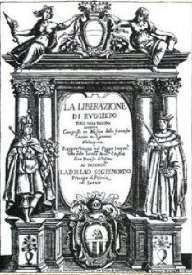Language Italian | First performance 3 February 1625 Librettist Ferdinando Saracinelli | |
 | ||
Similar Alcina, Il palazzo incantato, Bombastes Furioso, Ginevra di Scozia, Euridice | ||
Francesca caccini 1 2 la liberazione di ruggiero dall isola d alcina 1996 pro musica camerata
La liberazione di Ruggiero dall'isola d'Alcina (En. "The Liberation of Ruggiero from the island of Alcina") is a comic opera in four scenes by Francesca Caccini, first performed 3 February 1625 at the Villa di Poggio Imperiale in Florence, with a libretto by Ferdinando Saracinelli, based on Ludovico Ariosto's Orlando Furioso. It is the first opera written by a woman, and was long considered to be the first Italian opera to be performed outside of Italy. It was performed to celebrate a visit from Prince Władysław of Poland during Carnival 1625, and it had a revival in Warsaw in 1628. The work was commissioned by Regent Archduchess Maria Maddalena of Austria, wife of Cosimo II de' Medici, for whom Caccini worked. Ruggiero was printed under the protection of Maria Magdalena in 1625, only five years after the first printed opera in Italy. It is the only opera by Francesca Caccini to survive.
Contents
- Francesca caccini 1 2 la liberazione di ruggiero dall isola d alcina 1996 pro musica camerata
- Francesca caccini s la liberazione di ruggiero dall isola d alcina
- Recordings
- References
La liberazione di Ruggiero is written in the stile moderno, that is, the style of Claudio Monteverdi, although the work owes more perhaps to the work of Jacopo Peri. It uses the new stile recitativo, as well as canzonettas in the style of the Concerto delle donne. The scoring of the opera includes the lirone, and somewhat remarkably for the period, does not include a castrato. The scoring of the piece is balanced towards higher voices, with six sopranos, two altos, seven tenors, and only one bass, as well as a trio of recorders. A compositional scheme is used within the work that associates flat keys with the feminine (the female protagonist Alcina and her attendants) and sharp keys with the masculine (the male protagonist Ruggiero and the other male roles). The androgynous (she appears in the form of a man, Atlante) sorceress Melissa is neutral, presented in the key of C major. Alcina is an evil and sexual sorceress, whereas Melissa is androgynous and good. Melissa fights to free Ruggiero from Alcina's spells. Modern critics have interpreted the music as a statement about gender; either that, like Melissa, women must give up their femininity in order to be successful, or that, like Alcina (despite her lack of overt success), women can still be dominant because of the lasting allure of their music.
The work has been recorded, and has been revived a number of times, including in Cologne (1983), Ferrara (1987), Stockholm (1990), Minneapolis (1991), Düdingen (Switzerland), Regensburg, Neuburg an der Donau (Germany) (1999) and Brighton Early Music Festival 2015, where it will be recorded on Sunday 8th November by BBC Radio 3.
